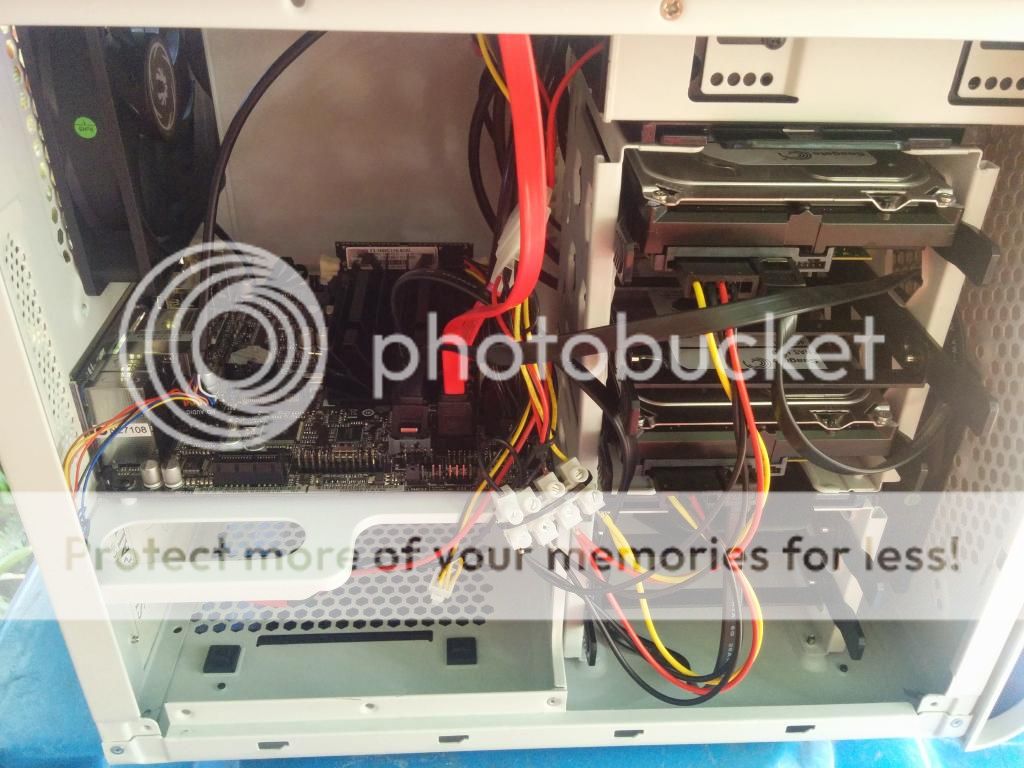Yes I'm aware of the ethernet limitations of the Pi. That was my frustrations with an otherwise capable device! Thanks again for your input.
Beiträge von nickkay
-
-
Thanks for the response and input. Yes fair call, it would be somewhat foolish to lose the redundancy afforded by raid 1, and my original intention has been to to use it since from the beginning.
At this point I'm thinking my retired Pi would make a fine backup up server connected to a spare 4GB external drive I have hanging around. I'll setup it up with a Wemo switch to come on at a particular time of night several times a week and use Rsync to backup. And continue to use another external drive with USBbackup to periodically to backup critical data such as documents, pics, home movies etc and keep offsite. Or look into spending a bit on getting a decent amount of cloud storage for the same purpose.
Incidentally it hit 44 degrees C where I live yesterday and with no one home and no air con on my house temps were not far below the ambient temps. I have a critical drive temp warning set at 50C and this was not reached so I'm feeling ok at this point with continuing with a fan free system.
-
OK, doing some reading here regarding Raid1, I came across KM0201's comments regarding returning to JBOD and ditching raid1 in favor of using a Rsync job to sync the drives every so often. Makes perfect sense to me, data is still redundant whilst having the advantage of recovery from accidental deletes and reducing usage of one of the drives.
What's the best method to ditch raid now my drives are established? Will I need to backup and reload my data on to each drive?
-
- Bitfenix Phenom Mini ITX Case
- Asrock Q2900-itx – Atom based J2900 (Pentium) Quad Core CPU Fanless
- 8GB G.Skill DDR3 1600 1.35V RAM
- 2 X Seagate NAS 4TB 3.5” Drives Raid 1.
- 1 X Fujitsu 60GB 2.5” OMV System drive
- 1 X Samsung 960GB 2.5” Deluge/Torrent drive.
- PicoPSU 120w
- 90w Power supply (fanless laptop style brick)
- Openmediavault 1.8 Kralizec.
Hi all, my first NAS build here. I started with a Raspberry Pi two years ago as lower power 24/7 seedbox and network attached file store. In that time it served faithfully and enabled me to learn a bit about Debian. Increasingly I became frustrated with the slow transfer speeds from the Pi so I began looking into an off the shelf NAS, possibly QNAP or Synology.
I planned to run Plex on my new NAS and prices rise quickly when wanting something with a decently capable CPU. I’ve built plenty of system in the past so I thought I’d turn my attention to a custom NAS build.
Number one consideration for me was low power usage and a virtually noiseless system.
The Intel Atom based J2900 (Pentium branded) CPU stood out for me for having a passmark score over 2000 for Plex transcoding and a TDP of only 10 watt.Asrock manufacture a nice J2900 mobo with a fanless heat sink, so that was the obvious choice coupled with low voltage RAM.
I did a fair bit of research on the various OS options available including FreeNAS, Amahi and Ubuntu Server, but OMV stood out as clear favourite being Debian based (in my comfort zone) and support of both Deluge and Plex.
I liked the look of Bitfenix Phenom case in white, and it has plenty of drive bays for future expansion. As I wanted to run system without any fans inside the case, I searched for an external power supply, a web search turned up the PicoPSU, perfect for a low power build.
Drive wise I opted for the Seagate NAS drives due to their slightly higher RPM than WD Red, and also they were significantly cheaper. I opted to mirror the drives for redundancy, backup of important data is made to an external drive I keep at work. In future when I need more space I’ll add more drives and move to Raid 5.
To allow for maximum spindown time of the 3.5” drives I opted to add a separate 2.5” drive for Deluge purposes. The mirrored 3.5” drives store all my media as accessed by Plex.I played with booting OMV from USB stick but decided to use an optical drive I had laying around from an old laptop as I could not find a USB stick with the write balancing feature that is recommended.
In the case I have spread the drives out as much as possible, its summer in Australia here, and so far drive temps do not exceed 46C on a hot day, they sit at 36C overnight.
Power consumption at idle is 32W, on boot and under load maximum is 65W.
Download speeds in Deluge is crazy as compared to the Pi, and Plex works brilliantly, I had two 1080p stream going last night and there was no stuttering which really surprised me.All in all very happy with the build.
I had no issues with NUC drivers as I see others have had with Asrock Mobo’s in fact the whole thing just worked right out of the box with OMV.
Any feedback would be appreciated, I’m new to the custom NAS scene so any constructive criticism would be appreciated.
One question I have, I’m currently running SAMBA/CIFS for windows shares, is there any advantage to changing to NTFS?
Some pictures I took earlier today when I took it outside to blow out glitter a Christmas ornament had dropped in it,
Look away if you're into cable management:

Back view, custom cardboard power supply


